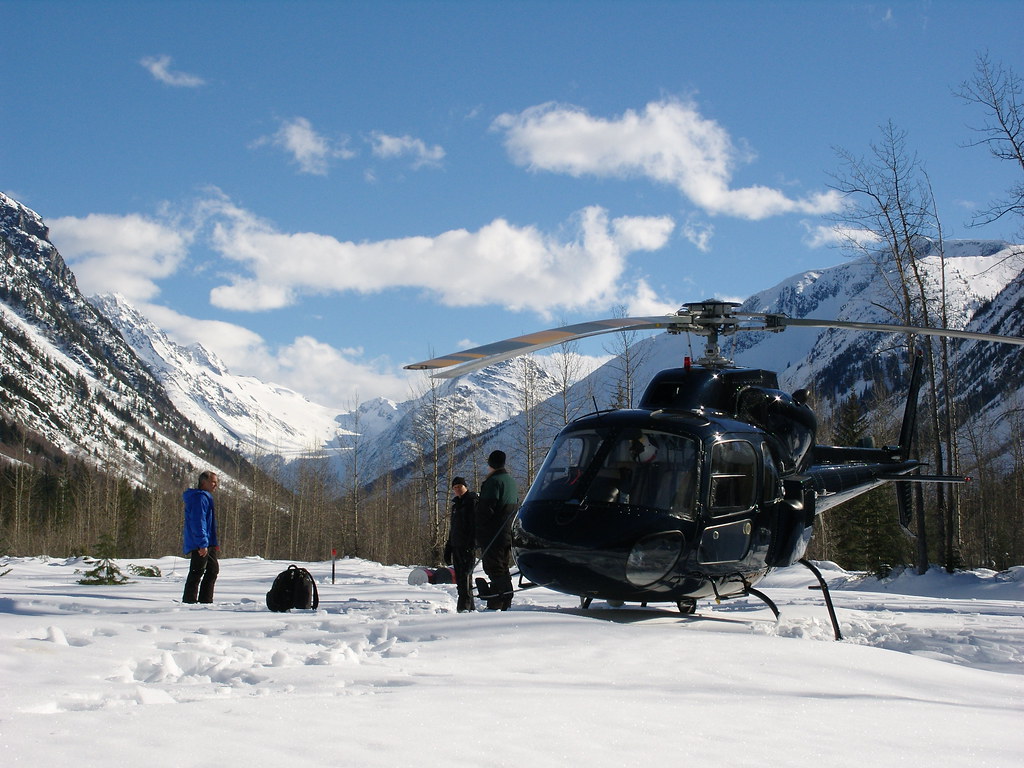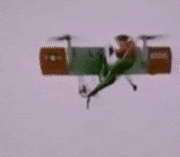|
loving love Helicopters. Went to a school with an aero program (that I was in), we had a visit one day from a Sikorsky S-70B-2 Seahawk operated by the Royal Australian Navy. Was loving awesome.
|
|
|
|

|
| # ? Apr 24, 2024 09:45 |
|
Its a little dated, but for anyone who has not seen it and has 2 hours to spare, I highly recommend watching NOVA's : Battle of the X planes. As Boing and Lockheed go head to head in a competition to win the military "all inclusive aircraft" contract. http://www.hulu.com/watch/23356/nova-battle-of-the-x-planes
|
|
|
|
Preoptopus posted:Its a little dated, but for anyone who has not seen it and has 2 hours to spare, I highly recommend watching NOVA's : Battle of the X planes. As Boing and Lockheed go head to head in a competition to win the military "all inclusive aircraft" contract. Ehhhhh. I really wanted to like that documentary, but the airplane fag inside me kept screaming that they shouldn't have been called "x-planes". Prototypes of a craft intended for production deserve a Y designation, X-planes are for weird-rear end experiments and proof-of-concept aircraft. You can argue, but I'll still just cross my arms and go "hrmph." edit: and for content Low rider drives a little slower 
Boomerjinks fucked around with this message at 20:49 on Apr 6, 2010 |
|
|
|
What kind of airplane is that?
|
|
|
|
WB-57, basically the US bought the licensing to produce the British Canberra bomber, it sucked for what we wanted so we gunned it up, made it's engines start with a pyrotechnic charge, and then started using it for high-altitude weather monitoring, reconnaissance, and space program observation. I think it's pretty, but I also LOVE goofy-looking planes.
|
|
|
|
ApathyGifted posted:There's another reason for tankers refueling tankers: Oceans. You should see one of the charts that shows how the RAF pulled off the Black Buck raids.
|
|
|
|
Boomerjinks posted:WB-57, basically the US bought the licensing to produce the British Canberra bomber, it sucked for what we wanted so we gunned it up, made it's engines start with a pyrotechnic charge, and then started using it for high-altitude weather monitoring, reconnaissance, and space program observation. Is the service ceiling on the WB variant any different from the initial airframe?
|
|
|
|
Dr JonboyG posted:You should see one of the charts that shows how the RAF pulled off the Black Buck raids. I was able to find it... It's insane how much effort went into getting 1 bomber over a target.  Click here for the full 775x850 image.
|
|
|
|
Boomerjinks posted:Ehhhhh. I really wanted to like that documentary, but the airplane fag inside me kept screaming that they shouldn't have been called "x-planes". Prototypes of a craft intended for production deserve a Y designation, X-planes are for weird-rear end experiments and proof-of-concept aircraft. Haha I cant argue that. Although the fan lift idea is something out of a sci fi movie. Too bad the F35 might be axed anyway. Preoptopus fucked around with this message at 21:57 on Apr 6, 2010 |
|
|
|
Preoptopus posted:Haha I cant argue that. Although the fan lift idea is something out of a sci fi movie.
|
|
|
|
dangerz posted:Where'd you hear that? The F22 production was cut but the F35 is going strong and will not be axed. Even if the USA somehow decides not to fund the program anymore, there are plenty of other countries that are still very interested that will keep it going. Theres a thread about it http://forums.somethingawful.com/showthread.php?threadid=3278360.
|
|
|
|
429cj posted:I was able to find it... It's insane how much effort went into getting 1 bomber over a target. Might take a while, but it'll get you there, and you don't have to rely on having a closer base in a sympathetic country. It also makes a pretty good statement of "Actually, yes, we do mean it".
|
|
|
|
Preoptopus posted:Theres a thread about it http://forums.somethingawful.com/showthread.php?threadid=3278360. Original.Evil posted:Maybe this is just me, but it seems like the only press we get anymore about fighter plane development is that it is full of bloated costs, long development times, and in recent times, outright failure. F35 isn't going to be cancelled. That being said, I strongly believe (as do many of the people I work with) that it's the last manned fighter that will be built. There's a lot of money invested in the F35 program from many different countries all over the world. If the USA were to pull out, there's enough to keep going from other countries. It's normal to have cost-overrun in any kind of advanced program such as this. The government knows this and that's why they tolerate it. There are all kinds of techniques/metrics they use to measure whether it's worth going over cost (Earned Value being a big one) and they know what they're getting into. If the program is getting out of control, there are many checks and balances that come into play long beforehand that would stop it. There's a lot of money invested in this program that people don't want to see just thrown away. The cost from the beginning of any fighter program is always over budget because there are so many variables. The same requirements that the government gave from the beginning will change all throughout the initial test phases. The F35 AA1 test article is nothing like the F35 that is on the runway right now and that's because things change a lot and force the company to restructure and rebudget. Now that's just personal opinion and in a few years, someone could quote this and call me an idiot. From my position in Aero though (I'm part of one of the Cores which oversees every single airplane program we have) I haven't been given any indication that I should be concerned.
|
|
|
|
Minto Took posted:Is the service ceiling on the WB variant any different from the initial airframe? Yep. The B-57 models (both the British and Martin built versions) had a service ceiling around 48,000ft, whereas the RB-57 could operate around 65,000ft.
|
|
|
|
dangerz posted:
I agree there's no way the F-35 will be cancelled...but not for the reasons you listed. The only reason any other countries can afford the F-35 is economy of scale. The US is purchasing 2/3 of the current expected production run (2400 of just over 3000, something like that). If the US drops out...hell, if the USAF drops out, you're going to see smaller partners cancelling their orders and larger partners cutting theirs significantly. But, the F-35 has too much political momentum. The current administration (and to a lesser extent the previous) has made it the centerpiece of US airpower. They've taken too strong a stand in propping it up (justifying the demise of the F-22, among other "savings" elsewhere) to do anything but bend over further. To say the F-35's overruns are no different from other programs is ridiculous. A Nunn-McCurdy violation without mitigating circumstances (like an increased number of orders) is not a normal occurrence, nor should it be. The fact that R&D for one of the fundamental functions of the aircraft spiraled out of control due to technical and developmental problems shouldn't automatically be ignored. In this case there's not much choice...we need this airplane. Unfortunately there aren't enough options when it comes to designing the next generation of *insert almost any weapon system here*. The companies have little/no incentive to keep costs under control. The government will pay, and if they don't the program will get scrapped and another will start...and once again, there are only a handful of options.
|
|
|
|
Honestly, with the advent of more technology that removes risk from warfare (such as pilotless aircraft) I'm a bit worried that low intensity conflict is going to become the norm. Keep the cocky fuckers employed, will ya?
|
|
|
|
Boomerjinks posted:WB-57, basically the US bought the licensing to produce the British Canberra bomber, it sucked for what we wanted so we gunned it up, made it's engines start with a pyrotechnic charge, and then started using it for high-altitude weather monitoring, reconnaissance, and space program observation. I was working a flight test program when one of these had engine trouble after a shuttle launch and had to come down at Moffett Field for repairs. Those guys took over our hanger, but were able to source an engine, replace it, test it, and head off back to JSC in about 48 hours. Seriously, the quickest NASA operation I've ever seen. I remember when I saw that thing roll up, I was scratching my head for a bit trying to figure out what sort of aircraft it was. They've got a pretty nifty website, including a copy of the ops. manual.
|
|
|
|
VikingSkull posted:Honestly, with the advent of more technology that removes risk from warfare (such as pilotless aircraft) I'm a bit worried that low intensity conflict is going to become the norm. As opposed to any other time in history? Low intensity conflicts happen every day all over the world, and that's been true for all of recorded history.
|
|
|
|
Dr JonboyG posted:You should see one of the charts that shows how the RAF pulled off the Black Buck raids. I had a sneaking suspicion that this is exactly what it was, and started thumbing through those old "Aircraft of the World" notebooks I have. I have a shitload of them. 7 full binders, and an index book. Yeah, the chart was in one of the Vulcan's cards (it's got 2 in the collection: 1 for the plane, and 1 specifically for Black Buck.
|
|
|
|
kris_b posted:The school I work at had a visit the other week from the local Police Eagle unit. Eurocopter AS355 F1. According to the crew, the FLIR is worth more than the chopper. F1 model twin-stars are the worst. 
|
|
|
|
I read the whole thread but I'm not sure if this story was posted. It's an article from Gizmodo about a Sled Driver on a mission over Libya. It's a heart racing read. http://gizmodo.com/5511236/the-thrill-of-flying-the-sr+71-blackbird quote:I can tell you about the SR-71 Blackbird's titanium frame, its Pratt&Whitney J58-P4 engines, or its genesis. But that's not important. What really matters is the thrill of flying it in an extremely dangerous mission, as remembered by this pilot.-JD OptimusMatrix fucked around with this message at 19:43 on Apr 7, 2010 |
|
|
|
OptimusMatrix posted:I read the whole thread but I'm not sure if this story was posted. It's an article from Gizmodo about a Sled Driver on a mission over Libya. It's a heart racing read. I loved the SR-71 already, but that was one of the best stories I've ever read. Thank you. Also, trying to think in terms of traveling a mile every 1.6 seconds is hurting my brain a little bit.
|
|
|
|
I don't know why OptimusMatrix didn't post the link to that Gizmodo article: http://gizmodo.com/5511236/the-thrill-of-flying-the-sr+71-blackbird
|
|
|
|
ozziegt posted:I don't know why OptimusMatrix didn't post the link to that Gizmodo article: His boner got in the way. We're lucky we got that much.
|
|
|
|
ozziegt posted:I don't know why OptimusMatrix didn't post the link to that Gizmodo article: Woops I thought I did. I'll add it now.
|
|
|
|
Articles like that just leave me in awe...
|
|
|
|
quote:After several agonizingly long seconds, we made the turn and blasted toward the Mediterranean 'You might want to pull it back,' Walter suggested. It was then that I noticed I still had the throttles full forward. The plane was flying a mile every 1.6 seconds, well above our Mach 3.2 limit. It was the fastest we would ever fly. I pulled the throttles to idle just south of Sicily , but we still overran the refueling tanker awaiting us over Gibraltar.
|
|
|
|
nurrwick posted:I loved the SR-71 already, but that was one of the best stories I've ever read. Thank you. It's amazing to me that, 20 years after the first operational jet fighter, the jet had already reached its logical extreme, Mach 4 ramjets. Watching Buzz Aldrin get kicked off of Dancing With The Stars while waiting for Lost to start last night, I realized that for every single one of those decorated badasses doing the flying and getting the glory, there's probably a 10,000 people they relied on to do THEIR jobs with the same perfection and professionalism that the drivers ultimately display. The legion of engineers, materials scientists, machinists, mechanics, chemists and flight ops people who contributed to the existence of such a thing as the Apollo program or the SR-71, each with their own stories and heart swelling with pride at the staggering feats that would've been impossible without their particular contribution. There used to be so many loving heroes.
|
|
|
|
Sterndotstern posted:The legion of engineers, materials scientists, machinists, mechanics, chemists and flight ops people who contributed to the existence of such a thing as the Apollo program or the SR-71, each with their own stories and heart swelling with pride at the staggering feats that would've been impossible without their particular contribution. Actually, the mere capability of craft like the U-2 and SR-71 and especially the X-31 are what inspired me to try to get into aeronautical engineering. Granted, the program didn't work out for me, but it was weird outside-the-envelope craft and the way they were designed and built that impressed me more than just being shiny fancy airplanes that could do crazy things. Lately, I've come to the desire to go down and catch a shuttle launch because some reptilian part of my brain is telling me "this is it... this is the last great accomplishment of our time. A reusable space vehicle that big will never happen again in our lifetimes." And that means something - it really is the end of the era of support having its own life and meaning. Sure, we'll have survival things happen here and there - especially in water quality and management - but the freakin space shuttle, you know? It's only a select few were able to make use of the piles of thought and elbow grease that were the Apollo program, and it'd be unforgivable to not go witness firsthand the only thing that approaches that that's happened in my lifetime to even get the chance to appreciate it as a spectator... I can only imagine what it would be like to have worked on designing that hardware and then to have watched it succeed more or less for thirty years.
|
|
|
|
Sterndotstern posted:It's amazing to me that, 20 years after the first operational jet fighter, the jet had already reached its logical extreme, Mach 4 ramjets. Absolutely. Similarly it amazes the heck out of me that barely 8 years after the first manned spaceflight we had people on the moon. Nothing like a war or a race to make technological leaps in a hurry.
|
|
|
|
nurrwick posted:Lately, I've come to the desire to go down and catch a shuttle launch because some reptilian part of my brain is telling me "this is it... this is the last great accomplishment of our time. A reusable space vehicle that big will never happen again in our lifetimes."
|
|
|
|
This thread just made me really sad  you loving downers
|
|
|
|
OptimusMatrix posted:I read the whole thread but I'm not sure if this story was posted. It's an article from Gizmodo about a Sled Driver on a mission over Libya. It's a heart racing read. pretty sure the pilot was Brian Shul, going by the story about his model SR-71. In related news, ITS HERE! ITS HERE! I HAVE SLED DRIVER, BITCHES 
|
|
|
|
Frank Dillinger posted:pretty sure the pilot was Brian Shul, going by the story about his model SR-71. In related news, ITS HERE! ITS HERE! I HAVE SLED DRIVER, BITCHES FUCKKK YOUUUUUUU
|
|
|
|
InitialDave posted:Anyone spending significant time around me will get to hear some fairly impressive rants on this and similar subjects. It feels like we've got a strange knack of taking seven years to do the impossible, then sitting with our collective thumbs up our arses for the next four decades. There's a pint with your name on it some time.
|
|
|
|
InitialDave posted:Anyone spending significant time around me will get to hear some fairly impressive rants on this and similar subjects. It feels like we've got a strange knack of taking seven years to do the impossible, then sitting with our collective thumbs up our arses for the next four decades. I'm thought about this too. It comes down to will, really. In the 60s we didn't really have the technology, but we still went to the moon. Nowadays our technology is much more advanced, but we completely lack the will and direction to do anything ambitious with it. If the farthest planning horizion you have is the next two fiscal quarters, it's no big suprise that there are no more heros.
|
|
|
|
Nebakenezzer posted:I'm thought about this too. It comes down to will, really. In the 60s we didn't really have the technology, but we still went to the moon. Nowadays our technology is much more advanced, but we completely lack the will and direction to do anything ambitious with it. If the farthest planning horizion you have is the next two fiscal quarters, it's no big suprise that there are no more heros. Combination of that but we're also a heck of a lot more safety conscious now too. Apollo would never fly today based on their calculated failure rate which I read somewhere was something like 8% each launch for a loss of vehicle event (don't ask for the cite, I just remember that as a kid). And that doesn't even include the risks of gamma rays and other high energy particles when in deep space.
|
|
|
|
Sterndotstern posted:Watching Buzz Aldrin get kicked off of Dancing With The Stars while waiting for Lost to start last night, I realized that for every single one of those decorated badasses doing the flying and getting the glory, there's probably a 10,000 people they relied on to do THEIR jobs with the same perfection and professionalism that the drivers ultimately display. Ever seen the Norman Rockwell painting Apollo Space Team? It includes a lot of those people in it along with the astronauts and is really pretty inspiring. 
|
|
|
|
Nebakenezzer posted:I'm thought about this too. It comes down to will, really. In the 60s we didn't really have the technology, but we still went to the moon. Nowadays our technology is much more advanced, but we completely lack the will and direction to do anything ambitious with it. If the farthest planning horizion you have is the next two fiscal quarters, it's no big suprise that there are no more heros. This is like explorers in the 1600s, they would come back with fanciful tales of monsters and dragons. Later on people went after the pioneers and guess what, there isn't poo poo that's exciting; the magic is gone and no one cares anymore when huge revolutions come in small pieces.
|
|
|
|

|
| # ? Apr 24, 2024 09:45 |
|
OptimusMatrix posted:I read the whole thread but I'm not sure if this story was posted. It's an article from Gizmodo about a Sled Driver on a mission over Libya. It's a heart racing read. So correct me if I'm wrong here, but he says 1 mile every 1.6 seconds. That's 5760 mph, or mach 7.5 at Sea Level (8.64 @ 85,000 feet). Mach 7.5.
|
|
|






























